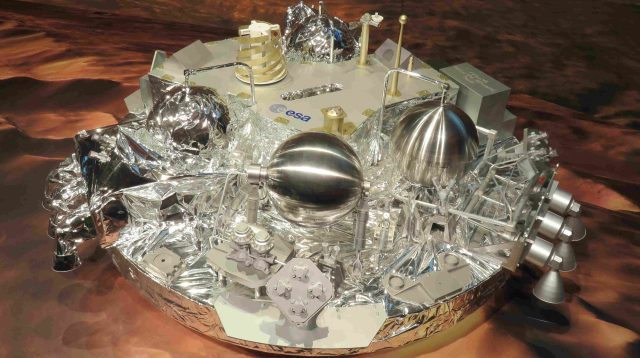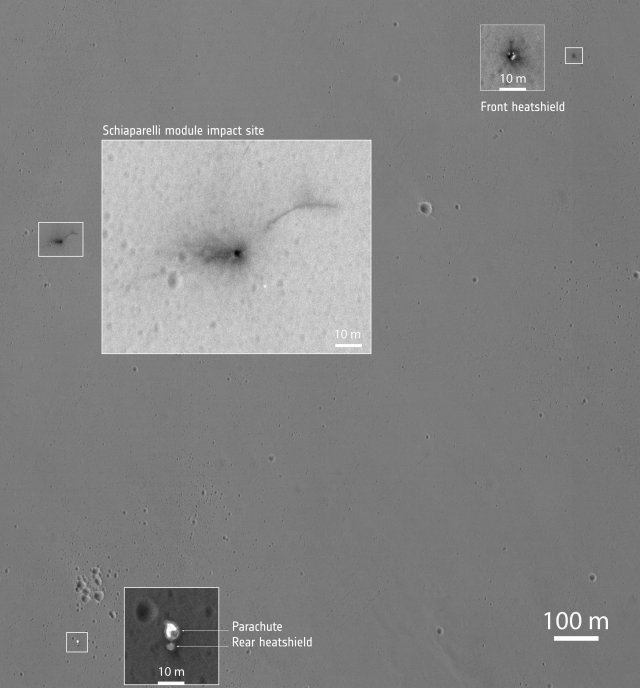When the European Space Agency (ESA) lost contact with its ExoMars mission, the lander, Schiaparelli, separated from the orbiter on October 16, and began its descent on October 19. The agency lost contact with Schiaparelli one minute before touchdown.

However, there were signs of issues before contact was lost. While the lander’s parachute did deploy, it was earlier than expected and it also ejected its rear heat shield. The lander’s thrusters intended to fire for 30 seconds but were only fired for three seconds.
Immediately, NASA provided images of the landing site, but the first few photos weren’t taken with the high-resolution Hi-RISE camera on the Mars Reconnaissance Orbiter. With that information now available, it sheds light on Schiaparelli’s final moments, but also raises questions simultaneously.
Below is the high-level shot of the entire area, with several places of interest highlighted:

At the bottom of the image, there is a large white spot and a smaller, slightly darker one below it. These two are believed to correspond to the rear heatshield and parachute that protected the lander during the first stage of the process. As Schiaparelli was intended for the ESA’s landing system, it’s important to note that the parachute deployed correctly, but was discarded too early.
The large spot on the center-left of the image is believed to be associated with Schiaparelli itself. The ESA said:
“The main feature of the context images was a dark fuzzy patch of roughly 15 x 40 m, associated with the impact of Schiaparelli itself. The high-resolution images show a central dark spot, 2.4 m across, consistent with the crater made by a 300 kg object impacting at a few hundred km/h. The crater is predicted to be about 50 cm deep and more detail may be visible in future images.”
While the arcing dark spot is difficult to interpret since it’s typically only created by a meteor approaching at very high velocity with a low incoming angle, the cause could be attributed to the rover moving too slowly and directly on the target. The ESA noted that the hydrazine tanks on the module might have exploded in a single direction. The front heatshield that was ejected earlier in the descent process is shown in the top-right of the image.
Currently, data points to a software issue with Schiaparelli that caused the crash, rather than a hardware malfunction. It suggests the spacecraft thought it was closer to the ground than it actually was, explaining why it fired its rockets for just three seconds. The follow-up ExoMars mission is scheduled for 2020, so fixing these problems and ensuring it doesn’t happen again are first priorities.
Source: ExtremeTech
Advertisement
Learn more about Electronic Products Magazine





